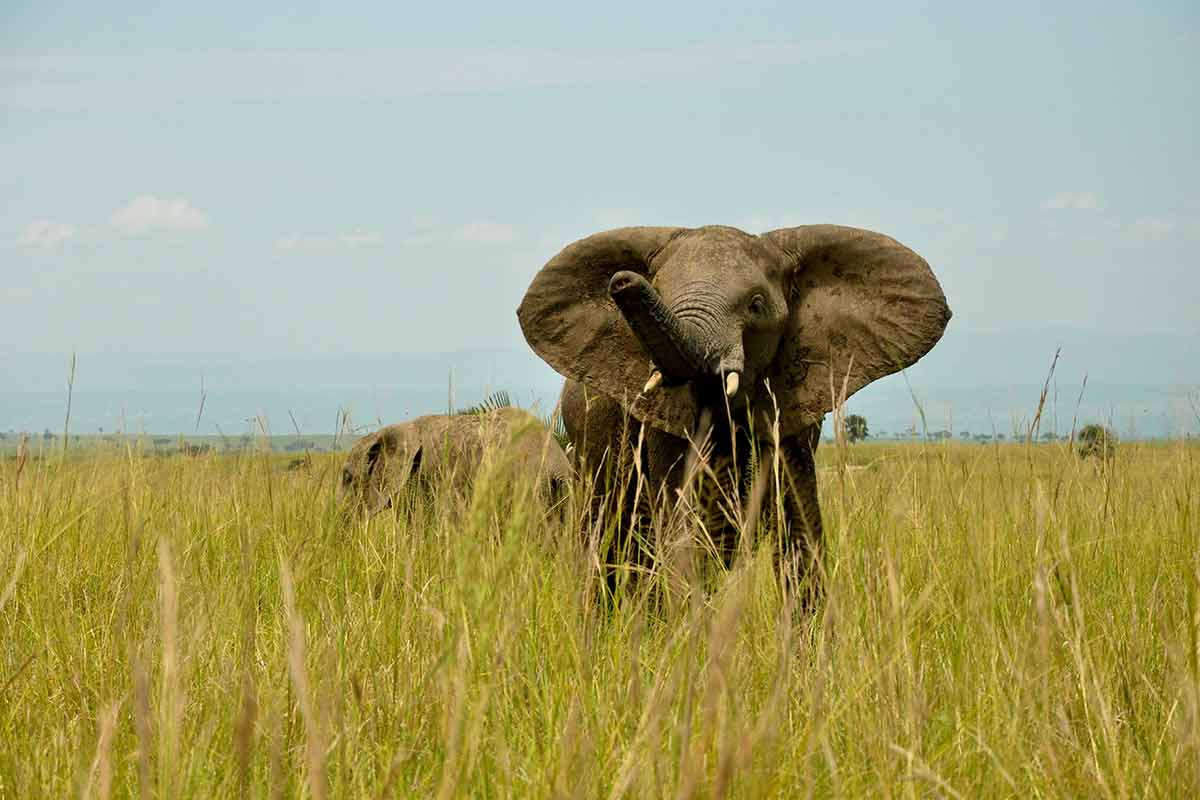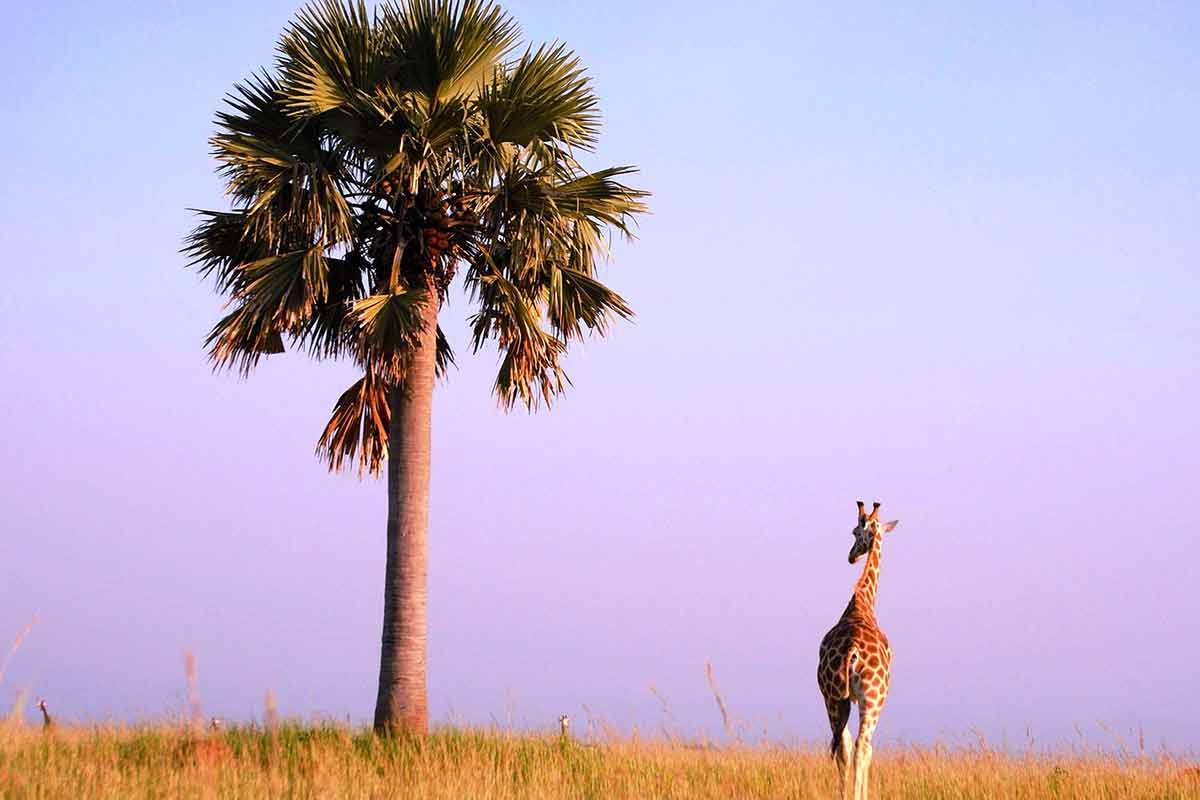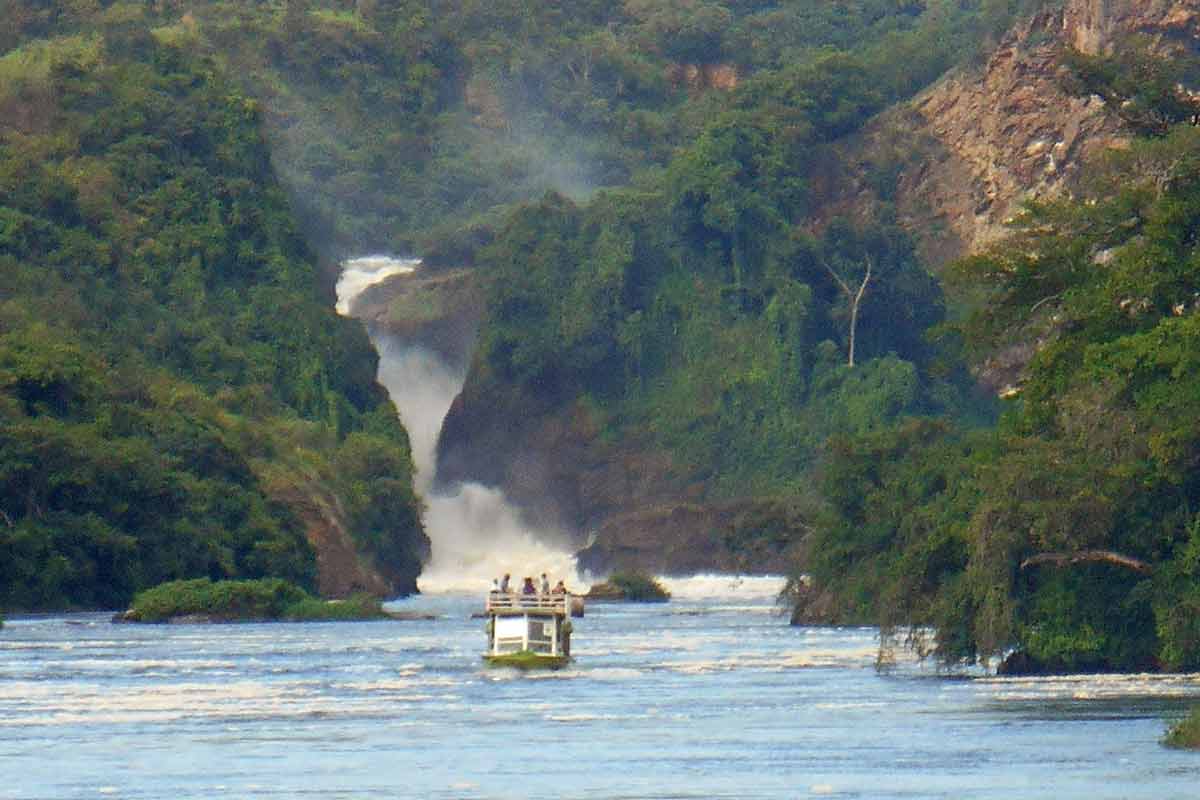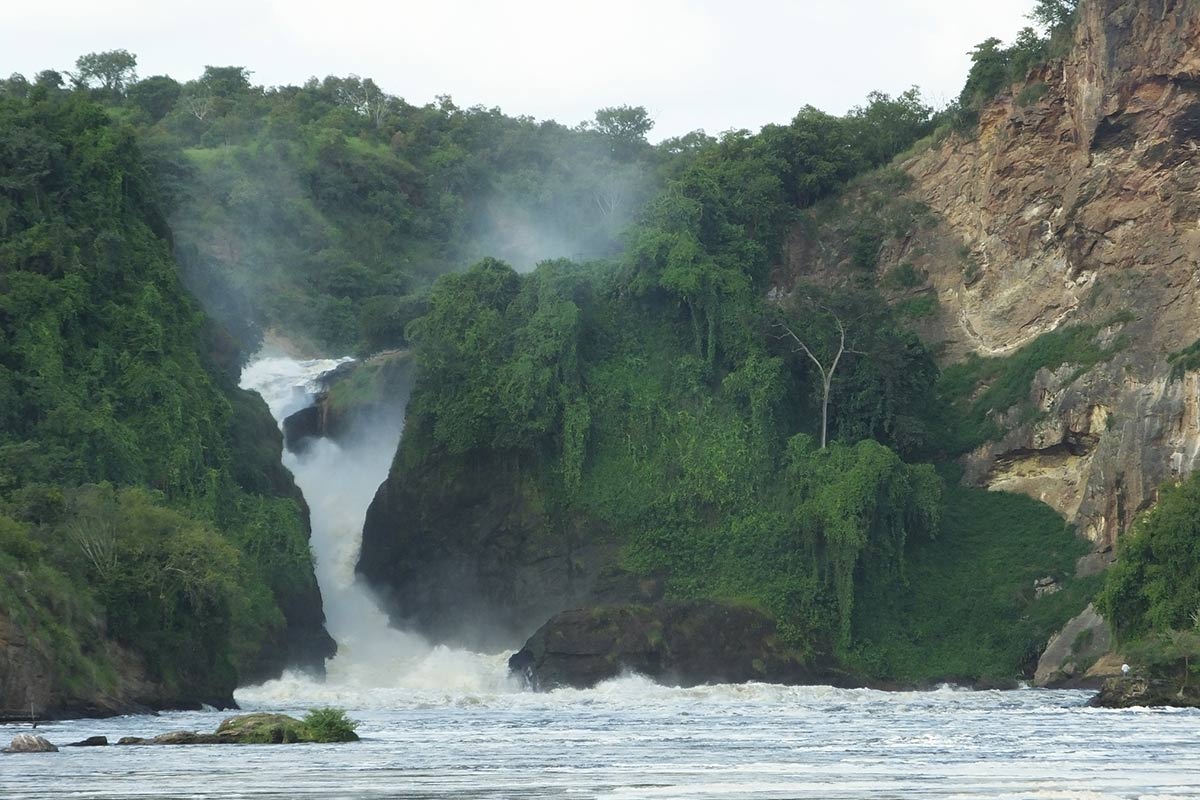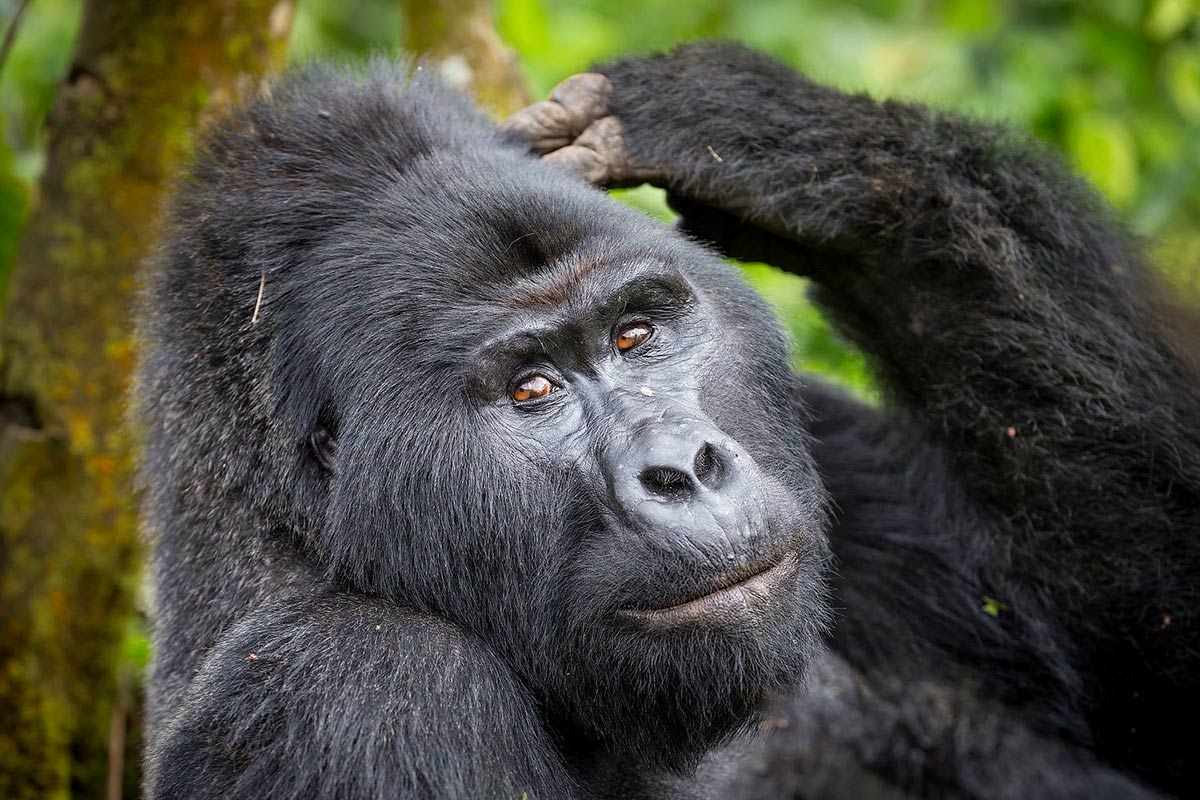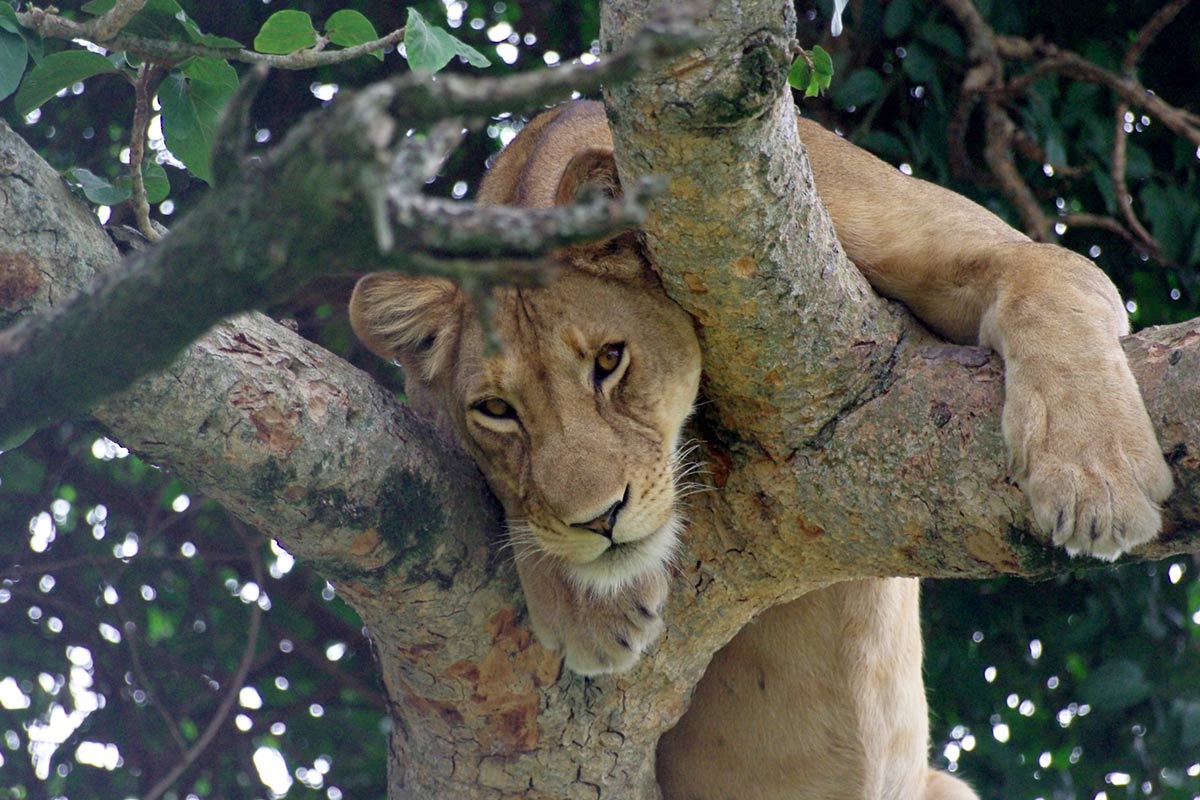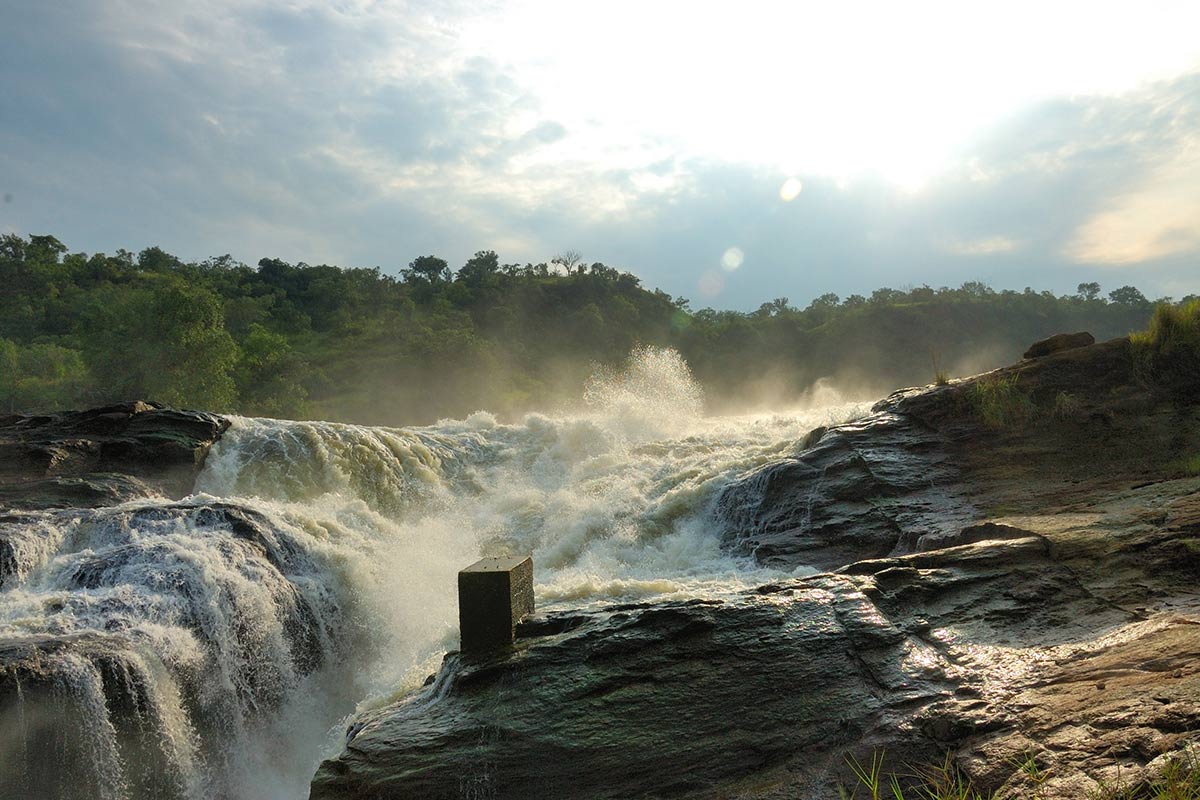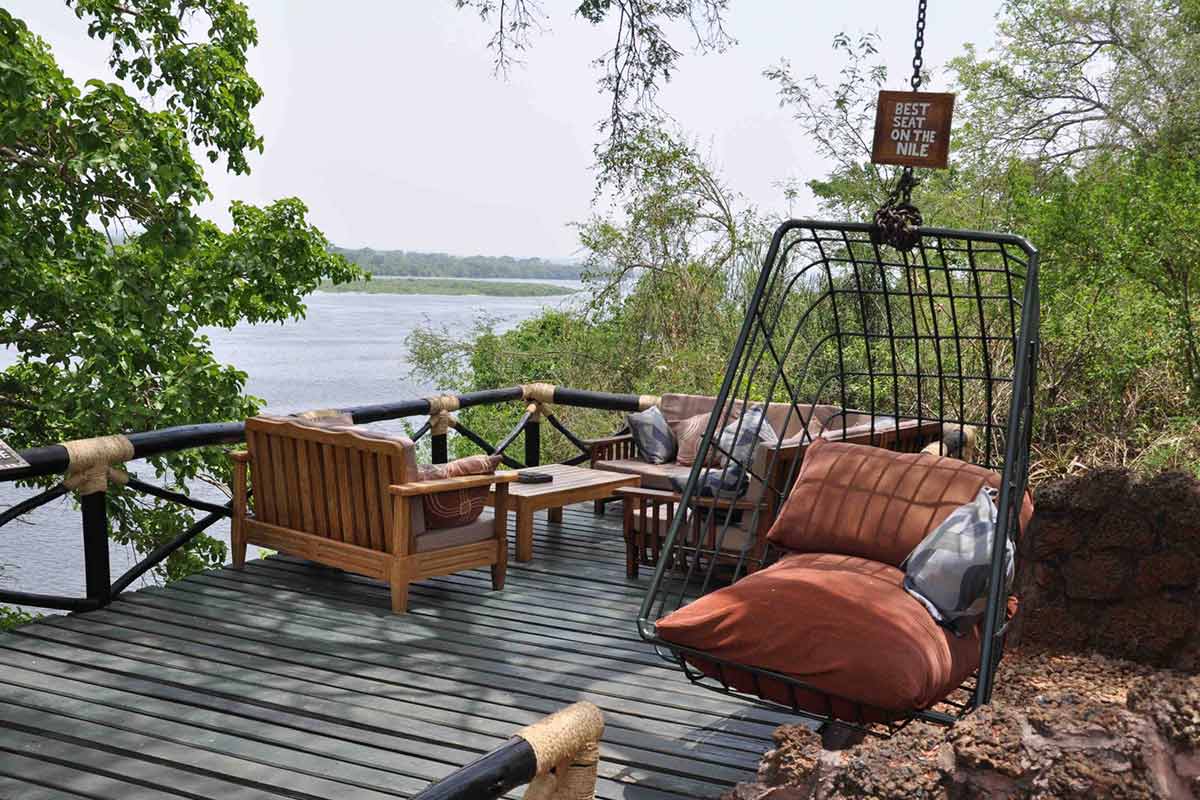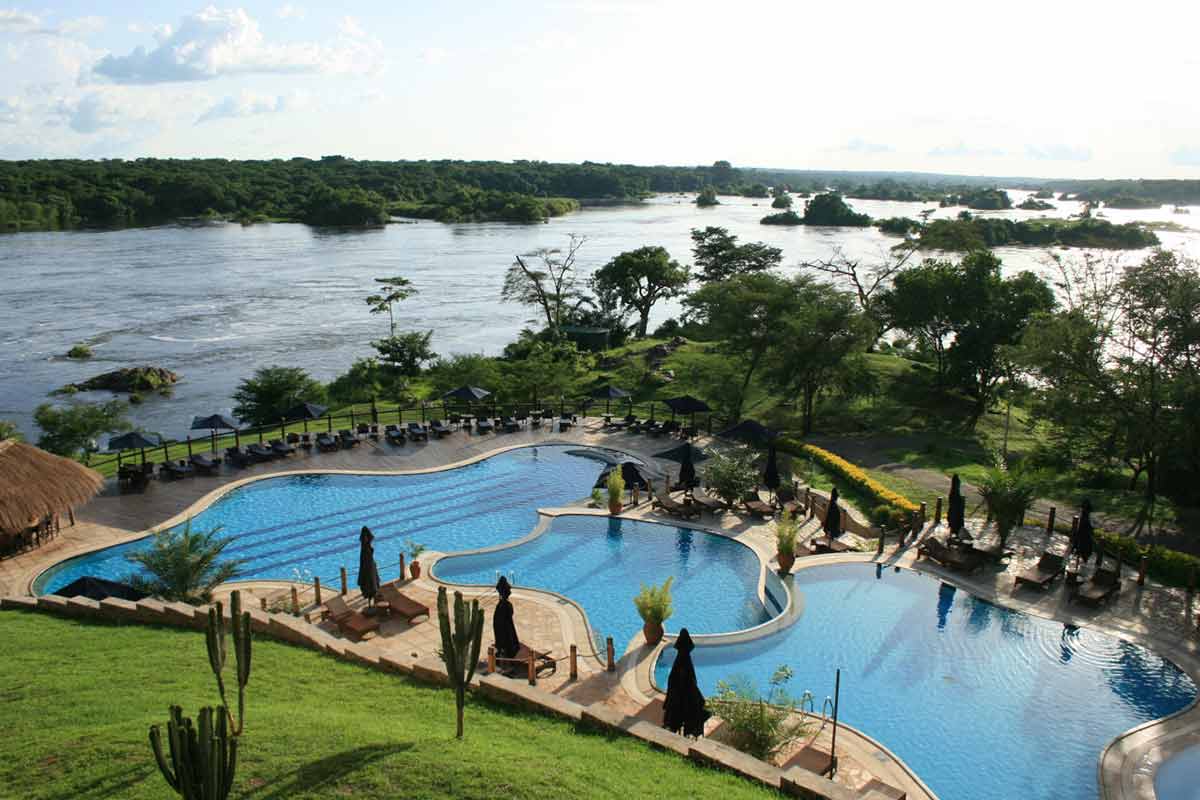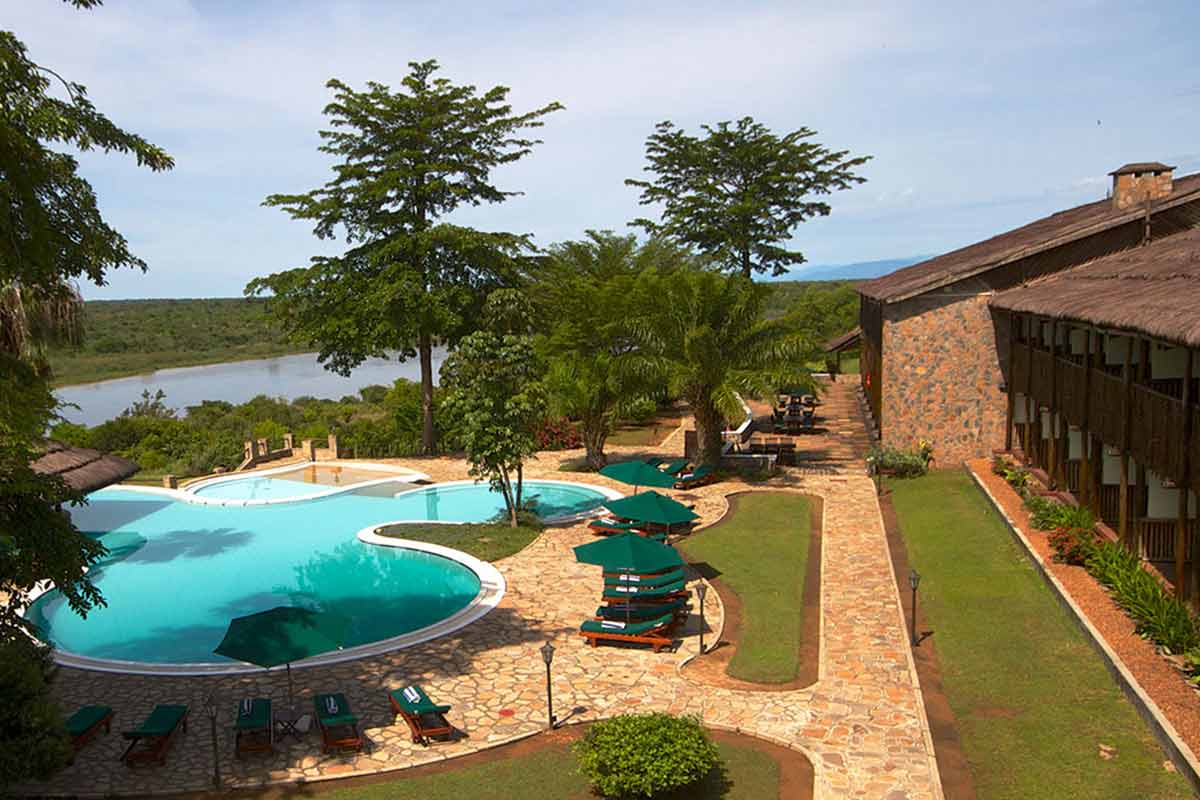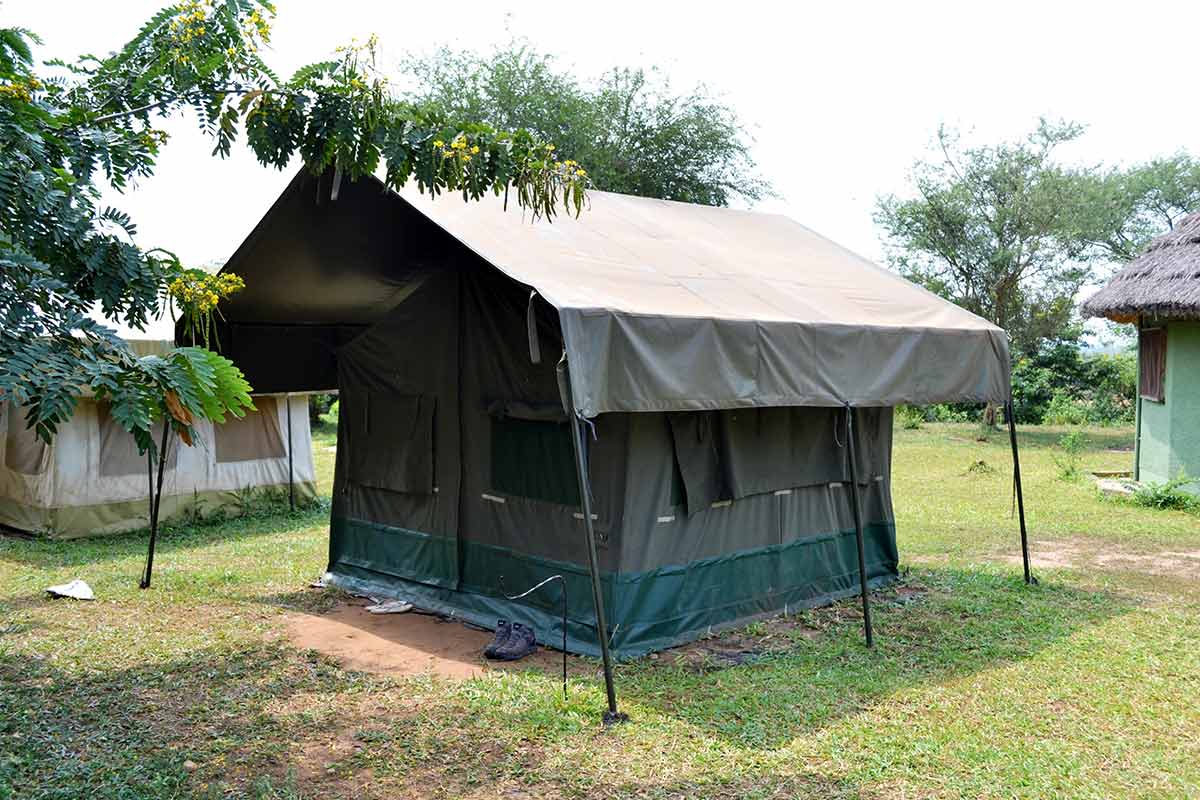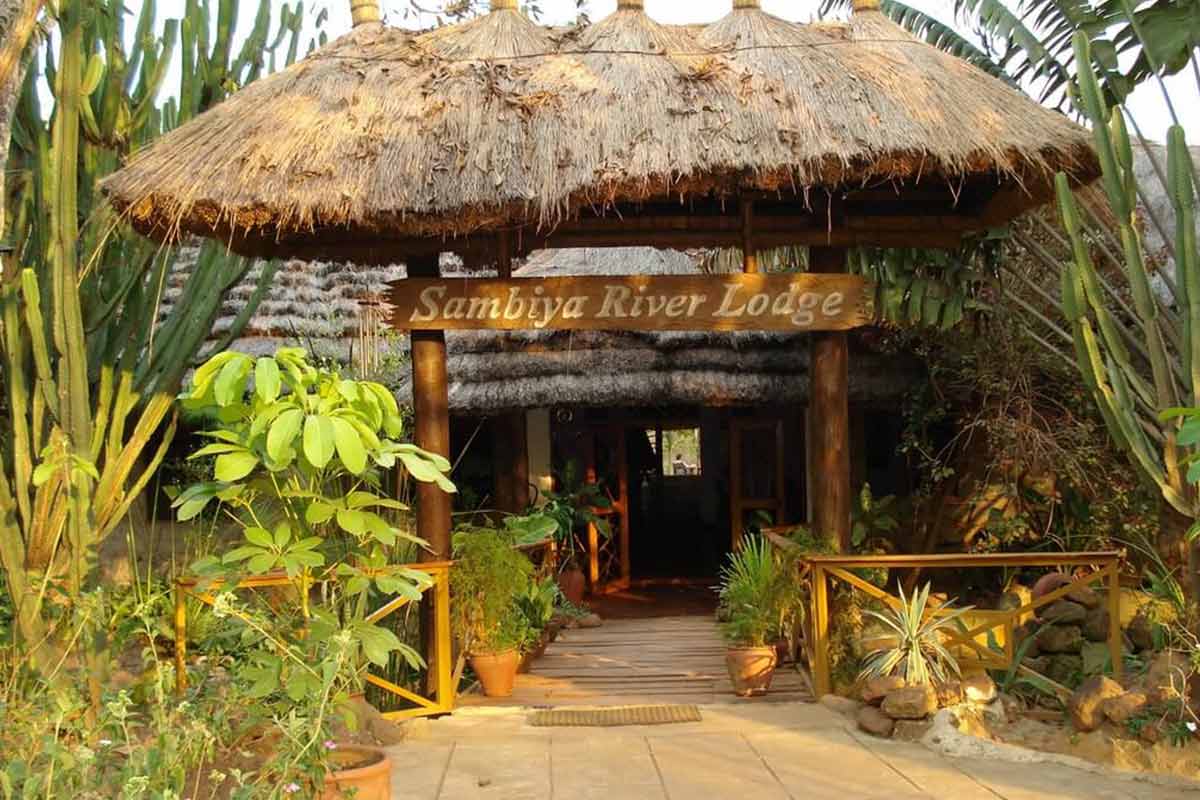Murchison Falls National Park
Murchison Falls National Park, part of the greater Murchison Falls Conservation Area (MFCA), offers excellent wildlife viewing. The MFCA includes Kaniyo Pabidi, which is a great place for chimpanzee tracking. Most big safari animals are easily seen, including four of the Big Five. The Victoria Nile bisects the park. At Murchison Falls, the Nile is channeled through a narrow cleft in the Rift Valley escarpment. Perhaps the most impressive waterfall in East Africa, boat trips to the spectacular Murchison Falls are a highlight.
Murchison Falls National Park sits on the shore of Lake Albert, in northwest Uganda. It’s known for Murchison Falls, where the Victoria Nile River surges through a narrow gap over a massive drop. Park wildlife includes elephants and hippos, and there are chimpanzees in the Kaniyo Pabidi mahogany forest. The Lake Albert Delta is home to rare shoebill storks. There are game fish in the cascades of Karuma Falls.
MURCHISON FALLS NATIONAL PARK HIGHLIGHTS
Boat trips to see possibly the best waterfall in East Africa
Around 1200 hippos lining the shallows of the river
Excellent big game viewing with elephant lion and buffalo
The rare and prehistoric shoebill stork; a birder's dream
Superb activities, including game drives, fishing and forest walks
Murchison Falls National Park Safaris
Uganda's largest protected area, Murchison Falls National Park is renowned for the waterfall from which it takes its name and the rich biodiversity that populate its river banks, lush grassland and riverine woodland. Splitting the park in two is the Victoria Nile, which flows west between the sprawling Lake Albert and Lake Kyoga.
Murchison Falls is easily the park's most famous feature. The explosive outburst of water that cascades 43m to create the falls is the result of the wide Victoria Nile squeezing through a 7m wide rocky clef before outpouring over the western edge of the Albertine Rift Valley. It's an impressive sight and one unique to East Africa.
Hop aboard a boat from Paraa and meander down the river to the very base of the falls - it's a well-established and popular way to experience the spectacle. Boating safaris are also a good way to explore the local ecology; most of the park's 1200 or so hippos live downstream of the falls and line the shallows, while menacing Nile crocodile can be found basking on the sandy shelves.
Home to 76 mammal species, the park is awash with big game. Rolling grasslands, savannah and vast swamps along the river's stretch are populated by large herds of buffalo and elephant, around 15 - 20 prides of lion and some of the world's most unique birdlife. The legendary and elusive shoebill stork is the main sighting for any birder, with the prehistoric creature a sight to behold.
On holidays to Murchison Falls game drives, forest walks, fishing and boat trips are the best ways to explore and get in touch with the park, the chance to enjoy the views from the top of the falls is also recommended. Accommodation at Murchison Falls is excellent, with a range of luxury lodges to stay in, the majority of which take advantage of the area's natural beauty and are situated on the beautiful river banks.
Selected Murchison Falls National Park Itineraries
Our favorite itineraries, contact our consultants for a tailored itinerary
How to get to Murchison Falls National Park
Unlike many of the other parks in Uganda, Murchison Falls doesn’t fit in a convenient circuit and is mostly visited as an add-on to a more standard safari package.
Murchison Falls National Park is located 305km/190mi north of Kampala. The drive takes about four hours. It is also possible to fly to Pakuba Airfield by chartered or scheduled aircraft service from Entebbe International Airport (EBB) or Kajjansi Airfield near Kampala.
When flying from abroad, you’ll arrive at Entebbe International Airport (EBB). It is located 46km/29mi from the capital (Kampala). Silverback Safaris will usually arrange for you to be picked up at the airport and will take care of all further transportation as part of your safari package.
The best time to visit Murchison Falls National Park
Wildlife spotting is easiest in the Dry season (December to February), when animals congregate at waterholes and there’s little undergrowth for them to hide in. But bring a broad-brim hat and plenty of sunscreen to ward off the fierce sunshine. Most visitors tend to go in search of lions, elephants and other animals from June to September, when it’s cooler and the rain isn’t that bothersome.
Watching wildlife in Murchison Falls National Park is generally good and at its best during the Dry season, from December to February.
Best time to go: December to February (Easier to spot animals)
High Season: June to September (The peak time for gorilla tracking, more people visit Uganda and Murchison Falls NP)
Low Season: March, April, May, October and November (High rainfall could lead to accommodations closing in other parks)
Best Weather: June, July (Less rain and lower temperatures)
Worst Weather: April, May and August to October (Higher rainfall, but seldom enough to interfere with your safari)
DRY SEASON
December to February
- Animals are found more easily since vegetation is thinner and wildlife gathers at water sources
- Plenty of sun and almost no rain
- Mosquitoes are fewer, so there is less risk of malaria
- The heat in January and February can be unbearable
WET SEASON
June to November
- The landscape is lush with greenery
- April and May are low season, so there are fewer people around, and rates may be lower
- The park offers good wildlife viewing throughout the year
- Migratory birds can be found
- Murchison Falls lies in a dry part of the country, and the rains rarely interfere with your safari
- Some roads may become hard to travel after heavy downpours
Murchison Falls National Park Weather

Murchison Falls has a consistently hot climate, the minimal variation in temperature due to the park’s equatorial setting. It does, however, get noticeably hotter during the relatively brief Dry season (December to February). Light rain is the order of the day in the Wet season (March to November), with the occasional tempest blowing through. Temperatures are also affected by the wide variation in altitude across the park.
The climate in Murchison Falls is tropical and hot. Being close to the equator, temperatures are quite uniform throughout the year. Daytime temperatures of around 31°C/88°F are common, with it cooling down at night to around 18°C/64°F. The altitude ranges from 500-1,292m (1,650-4,240ft), so climatic variations occur within the park as temperatures drop by about 6.5°C for every 1,000m you climb (or 3.5°F per 1,000ft).
The Wet season runs from March to November, with a period of less rain from June to July. There is little rain during the Dry season, which occurs from December to February. It doesn't rain that much in the Wet season either, but heavy storms can be expected
Health and safety
Murchison Falls National Park is safe to visit, in our opinion, as are most of the other parks and reserves in the country. Most of the people you will encounter are fellow tourists, staff working for the park, camps and tour operators.
Malaria & vaccinations: Taking measures to avoid malaria risks is very important. You should take antimalarial medication as well as pack plenty of mosquito repellent containing no less than 30% DEET. And long sleeves and trousers are good for covering up exposed skin in the evening. Ensuring you have the recommended vaccinations for Uganda is also essential.
Selected Murchison Falls National Park Lodges
Wildlife Viewing Safety Precautions
How to limit dangers and annoyances
Wildlife viewing should always be done with caution and respect for the animals . Use your common sense and remember that the behavior of wild animals can be unpredictable. Limiting dangers is easily done by following the expert directions of your guide. And please take note of the wildlife viewing safety precautions below.
Please note: by reading the advice below you may get the impression that wildlife viewing is a dangerous activity. That is not the case. In our opinion, wildlife viewing can be considered very safe as long as you treat the animals with respect and use common sense. It is extremely rare for incidents to occur and your professional guide is there to ensure your safety. The advice below is solely intended to further decrease the already small risks.- Always follow your guide’s instructions and guidelines.
- Stay in the car during game drives except at designated areas where you are allowed to get out of the car.
- Never walk off far to pee behind a bush – ask for advice from your guide about where to go
- Don't stand up in the car, hang out of the window or sit on the roof.
- Don’t drive too close to animals if you are on a self-drive safari. Back off if the animals seem disturbed.
- Don’t drive between elephants, especially females and their young. Never get too close to elephants, particularly lone males.
- Don't talk or laugh too loud.
- Stay close to your guide and group on a walking safari and always walk in single file.
- Watch where you put your feet while walking in the bush.
- Never run or jog in a wildlife area as it entices predators to attack. For the same reason, never run away from a predator when confronted. Instead ask your guide for help and instructions or slowly walk backwards while facing the predator.
- Never walk between a hippo and water. It may panic and charge because its safety route to the water is blocked.
- While on a canoe safari, stay in the shallows, to avoid hippos. Keep enough distance from animals on river banks.
- While camping, or in a tented camp, never leave food in your tent; it will attract wildlife.
- Cover your arms and legs in the evening and use insect repellent to protect against mosquitoes. The repellant should contain at least 20-30% DEET.
- Wear a hat, use sunscreen and drink plenty of water.
- Don't wear bright and colorful clothes or too much perfume. This is especially true for walking safaris and, to a lesser extent, for other wildlife viewing activities. In tsetse-fly areas it is recommended not to wear dark-colored clothing – such as black or dark blue – since it attracts these stinging flies. Bring warm clothes for morning game drives in open vehicles during the cold months of June, July and August.

